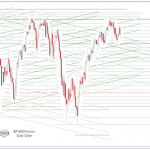This cycle’s main bubble is in government bonds and fiat currencies, with a dash of large-cap tech thrown in for variety. But like a hurricane spawning tornadoes at its periphery, this Money Bubble is creating secondary bubbles like student debt and subprime auto loans that are impressively destructive in their own right.
An example of how extreme things have gotten is US housing, which — as the previous decade’s main bubble — wasn’t supposed to be a problem this time around. But apparently no sector is immune from all that excess central bank liquidity. As today’s Wall Street Journal notes, the subprime mortgage is now being resurrected:
Does Anyone Remember How to Make a Subprime Mortgage?
Brokers willing to learn the lost art of making risky mortgages are in demand again
Brandon Boyd was a high school junior during the financial crisis. Now, the former Calvin Klein salesman is teaching mortgage brokers how to make subprime loans.
Mr. Boyd, a 25-year-old account executive at FundLoans in a beach town outside of San Diego, is at the cusp of efforts to bring back an army of salespeople who once powered the mortgage industry and, some say, contributed to the housing crisis.
Mortgage brokers, who serve as middlemen between lenders and borrowers, used to be a key part of the home-loan process. But some brokers faked loan applications and steered people into debt they couldn’t afford.
Financial regulation has severely diminished their ranks since the housing meltdown. And big banks with national sales teams say they won’t use brokers anymore because they are third-party contractors, making it harder to police loan quality.
Now, small and midsize independent lenders want the brokers back. Nonbank lenders that typically cater to riskier borrowers say they need brokers to fan out across the country and arrange mortgages to people with lower credit scores, or who can’t prove their income through a typical tax return.
Brokers are a key part of a mortgage chain that starts with a borrower going to a broker for a loan. The broker surveys lenders for the best loan to fit the customer. The lender then funds the borrower’s loan.
While brokers before the crisis served banks and independent lenders, today they are working largely for nonbank lenders who make up a critical part of the mortgage market.
In the first quarter, nonbank lenders accounted for about half the mortgages originated in the U.S., according to industry publication Inside Mortgage Finance.
Lenders say there is an untapped market among borrowers with good credit scores like self-employed workers who don’t have proper income documentation, or for responsibly made loans to borrowers with credit problems that have had bankruptcies in the past or had to sell their home for less than it was worth.
If they are successful in recruiting brokers, lenders believe the market potential for both types of loans could reach $200 billion annually.














Leave A Comment